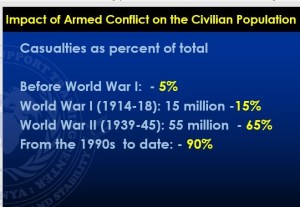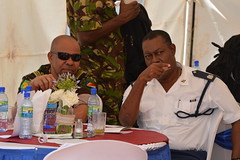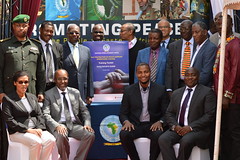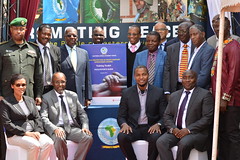On 29 Aug – 09 Sept 2016 I attended a Child Protection Course that was funded by the Government of Denmark at the International Peace Support Training Centre (IPSTC) in Karen, Nairobi.
At a time when children continue to bear some of the most devastating consequences of war, the changing nature of conflict in our recent times which has seen the civilian population, hugely made up of children being targeted, this important course equipped participants with important skills and knowledge on issues of child protection during armed conflict situations.
According to UNICEF, in South Sudan, approximately 13,000 to 16,000 children have been reportedly recruited into the armed forces and armed groups since the beginning of the conflict in December 2013.
‘Trauma experienced in conflict can cause lifelong negative effects to children’ IPSTC director Brigadier Patrick Nderitu says.
Child protection is important to ensure that children are protected from violence, abuse, displacement and other harmful effects of conflict that continue to disproportionately affect children.
The Department of Peacekeeping Operations (DPKO) recognized the training of peacekeepers on child rights and child protection as a key priority. Among other interventions, organizations such as Save the Children, UNICEF and various governments invest in offering child protection trainings in order to equip actors with the required skills, knowledge and capacity to protect children.
Topics covered
Among the modules covered in the 2 weeks training included, conceptualization of a child and child rights, children in armed conflict, the nature of armed conflict, dynamics of conflict and post conflict situations, child involvement in conflict, peace support operations and child rights, international, regional and national instruments, roles and responsibilities of peacekeeping mission components and external partners, military roles and task on child protection, prevention, responses and coordination frameworks for child protection, UN agencies, structures and mechanisms, monitoring and reporting mechanisms among others.
Participants at the co urse included the military, police and civilian components from various countries in Africa, Britain and mission staff. Using case studies, participants discussed the applicability of interventions for child protection including: advocacy, awareness raising, behavioral change, capacity building, provisional of social activities, livelihood improvements, mainstreaming child protection, monitoring child protection incidence and activities, incidence and alternative care, case management and family tracing, re-integration and re-unification.
urse included the military, police and civilian components from various countries in Africa, Britain and mission staff. Using case studies, participants discussed the applicability of interventions for child protection including: advocacy, awareness raising, behavioral change, capacity building, provisional of social activities, livelihood improvements, mainstreaming child protection, monitoring child protection incidence and activities, incidence and alternative care, case management and family tracing, re-integration and re-unification.
Emmanuel Jar
During the course we got to watch a clip by Emmanuel Jar who became a child soldier at 8 years, fighting a war that he did not understand anything about in Sudan. Emmanuel narrates his struggles as a child soldier, his pain, his struggles but through the efforts of an aid worker he was rescued. He is now an international hip-hop artist and an activist for other children in war zones. The touching video is a call and a reminder to be steadfast and resilient in protecting children and to join forces as an international community to work on restoring peace in many places around the world being affected by conflict.
‘Peace support operations actors have a responsibility to create a peaceful environment’ Mette Knudsen, H.E Ambassador of Denmark to Kenya speaking during the closing ceremony of the course.
‘A safe and happy child is a bright future for all and a moral obligation for us to protect children’ Ms Knudsen says.
Article by Evelyn Namvua, Knowledge Management Coordinator, Save the Children ESARO






